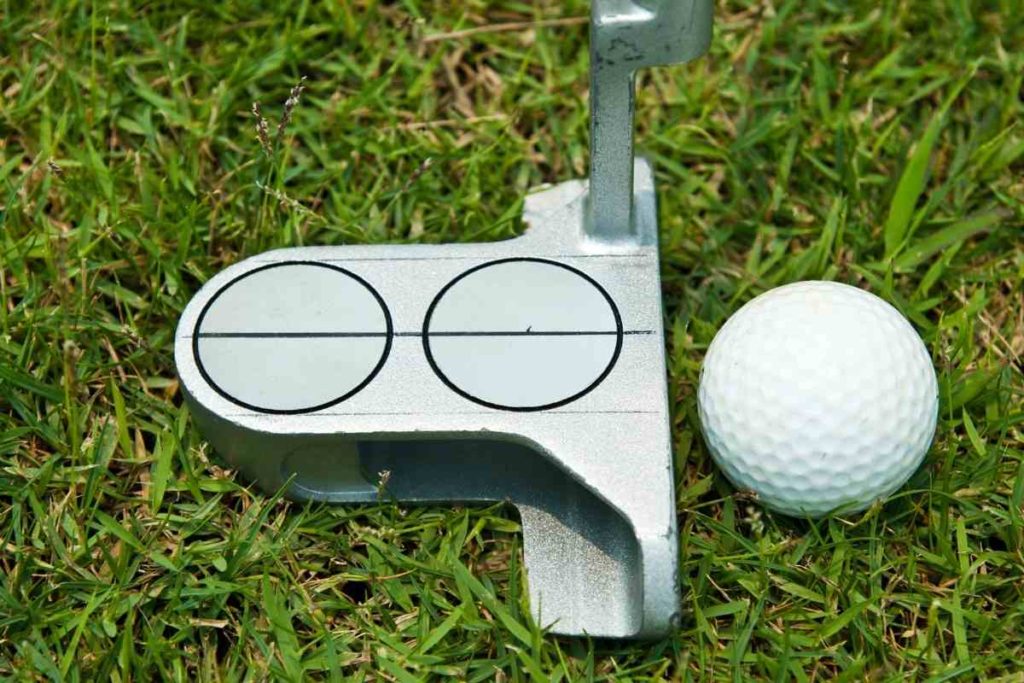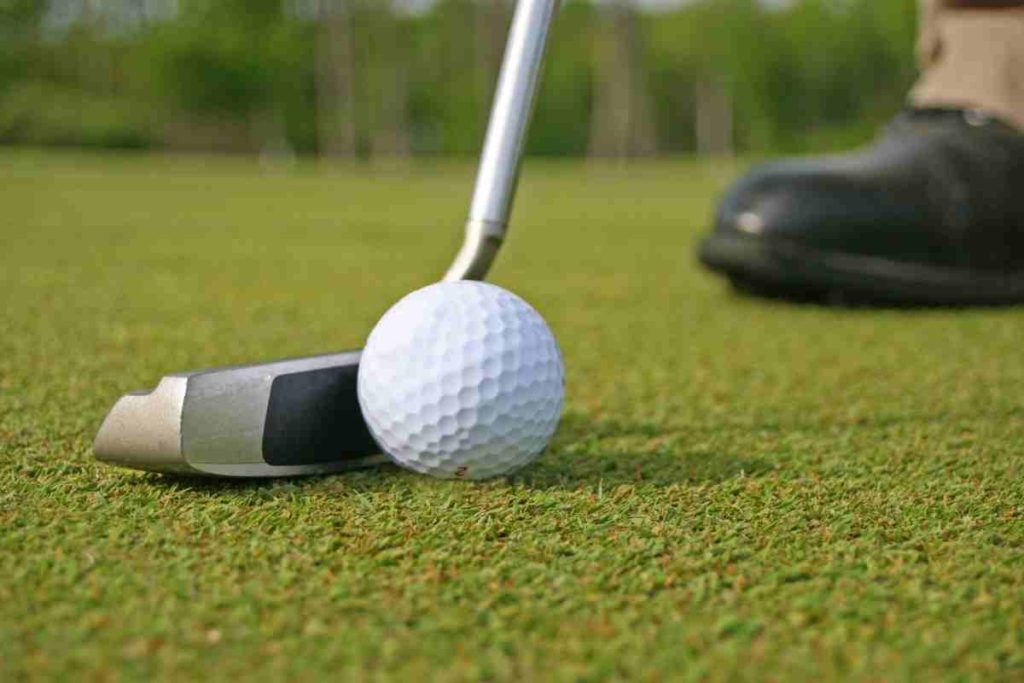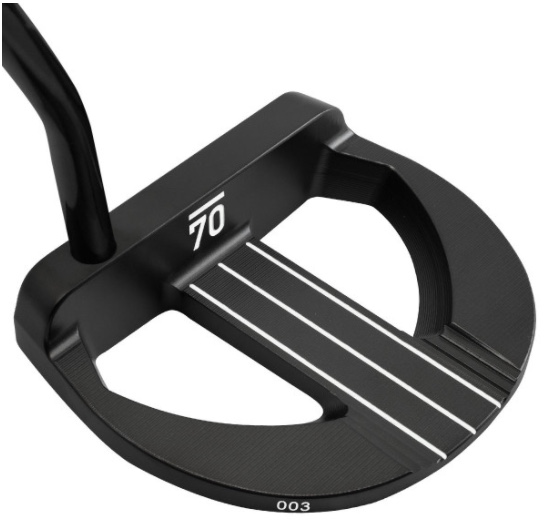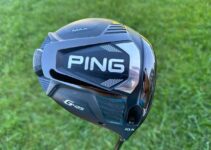Whether you would like to admit to it or not, the putter is the most important golf club in the bag. On the days when your putter works, you will undoubtedly shoot lower. Days where you three-putt every green, expect to post a big number. Sometimes, putting issues comes down to the stroke, but it starts with choosing the right type of putter.
If you are looking for a new putter in 2023, it makes sense to understand exactly what you need in a putter. We are going to break down all of the factors and options that you have available. Let’s take a look at how to choose the right type of putter.
Types of Putters (and How to Choose the Right One)
Many factors go into choosing the right type of putter. However, the largest and most important is the putter head style. If you end up with a putter head style that works for your stroke and you can play with it consistently, the other fitting factors can typically be adjusted.
Once you have a great putter in place, the grip, length, and even the face angle can often be adjusted.
When choosing the right type of putter, try to think about your putting stroke and whether or not it is a straight back straight through style or more of an arc type stroke. Some putters are versatile, but others are specifically designed for a specific type of putting stroke.
Traditional Mallet
Best For Straight Back Straight Through Stroke and Forgiveness
A traditional mallet putter is typically the most popular putter choice on the market. Traditional mallets are semi-circle-shaped putters that are designed for ultimate forgiveness. A mallet putter is an option that works quite well for beginner players looking to learn distance control and accuracy.

Overall you will find that a traditional mallet putter has a longer alignment line than a blade and a much larger sweet spot. The idea of the traditional mallet is to take the club back on a straight line and then return it back to the ball on this same straight line.
The putter itself is weighted to help those that want to keep the club stable and straight on the stroke. Most golfers will agree that the straight back straight through putting style is the easiest to learn and repeat.
If you have perfected this, then the traditional mallet putter is a smart option to consider. Some of the companies best known for creating traditional mallet putters are Ping and TaylorMade.
| Pros | Cons |
| Forgiving | Not the best on faster greens |
| Easy to line up | Not recommended for arc style stroke |
| Great for the straight back straight through | |
| Available in several different models | |
| Good alignment lines |
Blade
Best For: Arc Style Putting Stroke
A blade-style putter is the most traditional and classic design in the game. With a blade-style putter, you will be able to make a perfect arc-style stroke. Blade putters are preferred among lower handicap players that are very particular and detail-oriented when it comes to putting.

Blade putters created by Ping more than 75 years ago really changed the way golfers thought about putting. Since then, the blade putter has come a long way, and materials and face inserts have allowed for many different options and varieties in the putters.
The Scotty Cameron blade putters are among some of the most popular on the market today, and that has everything to do with their impressive feel and look.
Related: Mallet vs. Blade Putters: How to Know Which is Best for You
As great as blade putters are, there are times when a blade will not be a good fit. On a really slow green, blade putters typically don’t have the MOI that you will need to get the ball to the hole quickly. This does not mean a blade putter will not go far enough; it is simply harder to get a more consistent or accurate strike.
In addition, the blade putter has a smaller sweet spot which makes it a bit more of a difficult club choice for a beginner player. If you are new to the game and have an option for a mallet-style putter, you may want to take it.
| Pros | Cons |
| Consistent and precise strike | Difficult to remain consistent on slower greens |
| Great for faster greens | It can be a bit unstable for the straight back straight through stroke |
| Smart choice for arc style stroke | |
| Classic looking design | |
| Appeals to better players |
Modern Mallet
Best For Alignment & Straight Back/Straight Through Style
As I mentioned, a mallet putter has a semi-circle type shape that extends the overall shape of the blade. However, a modern mallet is much larger. These putters are sometimes referred to as a High MOI design. You have likely seen some of these, like TaylorMade Spider or a Cobra King Vantage putters.

The size of a modern mallet putter is considerably larger than any other putter on the market. With this large size, you will find a very long alignment line for easy aiming and a big sweet spot.
The modern mallet putters offer quite a bit of forgiveness; however, they also have a good feel. The feel of a modern mallet putter is often better because of the number of different materials they can use. In addition, modern mallets often have a face insert to help get a unique feel with each stroke.
Overall, you have to adjust to the look and size of this putter for it to be a fit for you. The modern mallet is a unique design, and you will likely see more and more of these putters in the future.
| Pros | Cons |
| Multi-material construction | The large shape is challenging to get used to |
| Very high MOI | |
| Many different designs to choose from | |
| Very easy alignment | |
| Good for the straight back straight through putting stroke |
Face Balanced Putters
In addition to the blade and mallet-style putters, you can also choose something that is face-balanced or toe-balanced. These putters may not look much different than other putter models and types. You may have a look a little close to see if something is face or toe balanced.
A face-balanced putter will turn upwards when you balance the shaft on the tip of your finger. The face-balanced putters are best for a straight putting stroke. The putter head does not rotate all that much, and therefore it is easier to keep square.
Toe Balanced Putters
Toe balanced putters will have the toe point towards the ground when you balance it on your finger. With these putters, they will open and close and be easier to square up at impact. The toe balanced putters are typically oversized mallet-style putters, suitable for those with an arc-style putting stroke.
Putter Shafts and Offset
The shaft of a putter was almost always steel until just a few years ago. The Callaway Stroke Lab released the first partial graphite partial steel golf shaft on the market. These are designed to give players a more smooth and consistent feel when hitting shots. Although the Stroke Lab shafts are great for various players, the standard golf shaft in a putter is a basic steel shaft.
With not much variation in the material of the shaft, you will still want to consider the location of the shaft in the putter head. The two options are a center shafted putter and a heel-shafted putter.
Center Shafted
A center-shafted putter can be a bit harder to find than a heel-shafted putter. With a center-shafted putter, you will have quite a bit of control over the club head. The extra control gives you plenty of stability at impact, making it easier to be consistent with your putting stroke.
The center shafted putter is a good choice for the beginner player that tends to have a hard time keeping the putter stable on their shots.
Heel Shafted
A heel-shafted putter is the standard design for most players. The heel-shafted putter allows for more manipulation of the face and more unique putting strokes and styles. With a heel-shafted putter, it is essential to have the putter fitted to the proper length.
With the putter head connected to the shaft in the heel, you will need to ensure you can still get your eyes over the ball.
Putter Offset
Putters can also come with a certain amount of offset. The offset in a putter helps ensure that the hands are slightly ahead of the ball at impact. When hands are ahead of the ball, a more stable putter head typically gives golfers a better chance of hitting a solid putt.
How To Choose The Right Putter Length
Once you have your perfect putter picked out, you will also need to consider the proper putter length. After all, a putter that looks and feels great will not do you any good if it is not the appropriate length. Choosing the proper putter length is not difficult if you are aware of the process.
You will need to measure your height and also consider the type of putting stroke that you have. For the most part, golfers will need to ensure that their eyes are directly over the golf ball when they are putting. This is the only way to ensure that the club can start on the proper path and alignment is accurate.
For an average height male, the best putter length is a 34-inch putter. However, women golfers need to consider a standard length that is much closer to 33. For many years putters were sold as 35 inches being the standard length.
Today we know that 35-inch putters are best for those that are more than six feet tall. The putter length is an easy fitting factor to change and adjust. However, with many modern putters being counterbalanced, make sure that you have a club-fitting professional to make any of the equipment changes you need.
How To Choose The Proper Putter Grip
Once you have your putter fit and the proper type of putter for your game, it’s a good idea to find a putter grip that will work for your game. The putter grip technology has changed considerably through the years. The most popular types of putter grips on the market are midsize or oversized putter grips.
The idea behind a midsize or oversized grip is that you will be able to take your hands out of the stroke and swing more with your larger muscles.
Golfers who can stay relatively still and just move the putter back and forth with their shoulders and arms will be more successful.
So many players think that the age of the putter grip doesn’t matter. However, once the grip gets slippery and starts moving or twisting in your hands, you are risking missing a putt because of this.
Do yourself a favor and get a new putter grip each year, one that feels good and allows you to have complete control over the putter at all times.
Conclusion
At this point, you should have a better idea as to how to choose the right type of putter. There are many different types of golf putters on the market, and finding something that you have confidence in, will be the most important part of the process.
Try to pay attention to the way the putter feels, how it fits in your hand and whether or not you are performing as you should on the course.
A putter fitting is often a good idea as it can narrow down some of the best putter choices on the market. Putter fittings are designed for those that need more statistic-based results as opposed to feel-based results.
The bottom line is that all golfers should be spending a bit more time paying attention to the puter they have in their bag.




